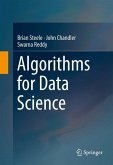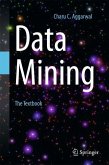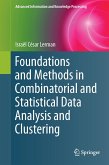Data mining essentially relies on several mathematical disciplines, many of which are presented in this second edition of this book. Topics include partially ordered sets, combinatorics, general topology, metric spaces, linear spaces, graph theory. To motivate the reader a significant number of applications of these mathematical tools are included ranging from association rules, clustering algorithms, classification, data constraints, logical data analysis, etc. The book is intended as a reference for researchers and graduate students. The current edition is a significant expansion of the first edition. We strived to make the book self-contained and only a general knowledge of mathematics is required. More than 700 exercises are included and they form an integral part of the material. Many exercises are in reality supplemental material and their solutions are included.
From the book reviews:
"The goal of this book is to present the basic mathematical theory and principles used in data mining tools and techniques. ... Graduate or advanced undergraduate students with prior coursework in mathematics will find this book a useful collection of the fundamental mathematical ideas ... . The exposition of concepts is clear and readable. Comfort with mathematical notation is necessary, since the book makes significant use of such notation. Several exercises are included, with solutions being provided in outline." (R. M. Malyankar, Computing Reviews, September, 2014)
"The goal of this book is to present the basic mathematical theory and principles used in data mining tools and techniques. ... Graduate or advanced undergraduate students with prior coursework in mathematics will find this book a useful collection of the fundamental mathematical ideas ... . The exposition of concepts is clear and readable. Comfort with mathematical notation is necessary, since the book makes significant use of such notation. Several exercises are included, with solutions being provided in outline." (R. M. Malyankar, Computing Reviews, September, 2014)








